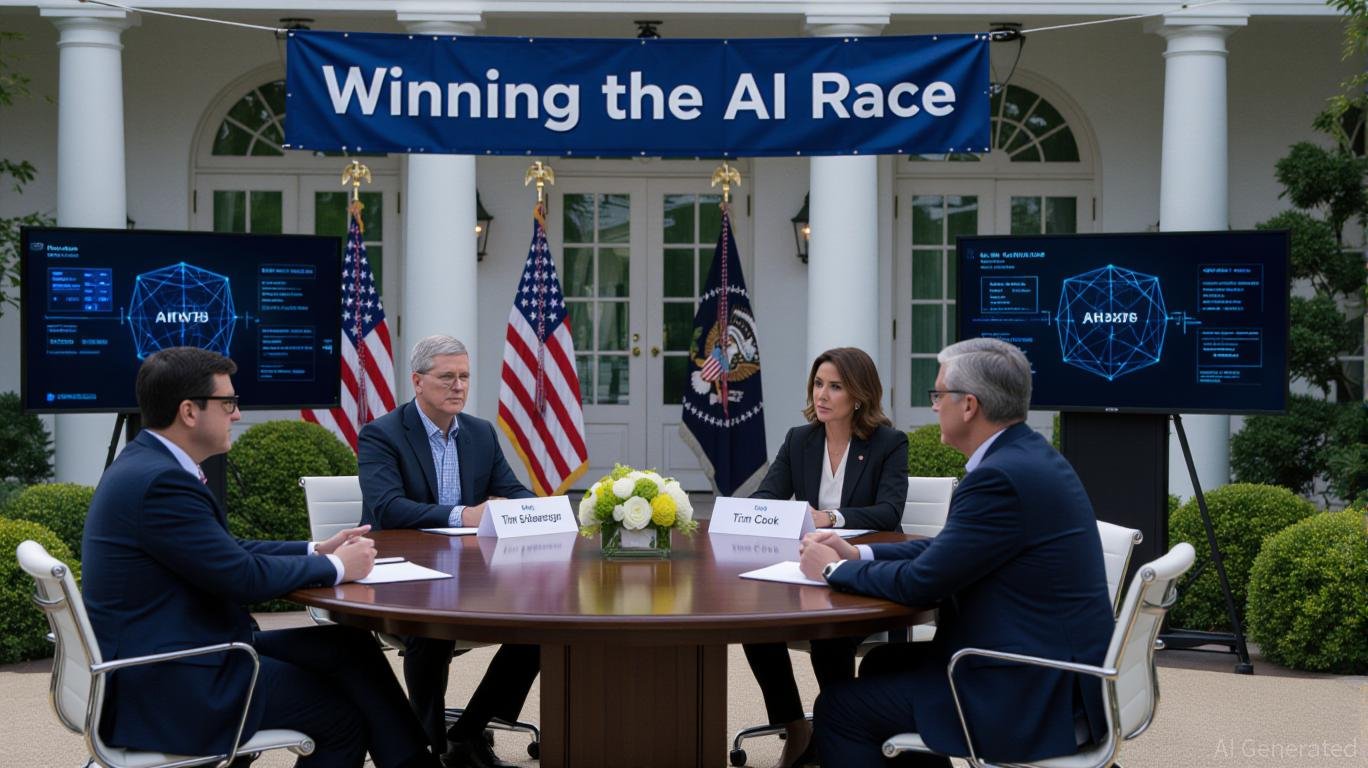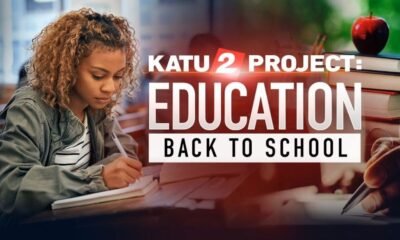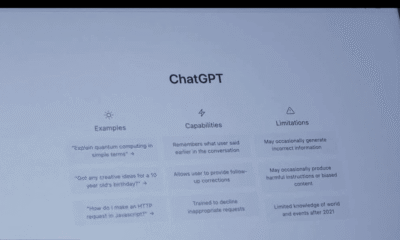Tools & Platforms
MathGPT.AI, the ‘cheat-proof’ tutor and teaching assistant, expands to over 50 institutions

As AI becomes more prevalent in the classroom—where students use it to complete assignments and teachers are uncertain about how to address it—an AI platform called MathGPT.AI launched last year with the goal of providing an “anti-cheating” tutor to college students and a teaching assistant to professors.
Following a successful pilot program at 30 colleges and universities in the U.S., MathGPT.AI is preparing to nearly double its availability this fall, with hundreds of instructors planning to incorporate the tool. Schools implementing MathGPT.AI in their classrooms include Penn State University, Tufts University, and Liberty University, among others.
The most notable aspect of the platform is that its AI chatbot is trained to never directly give the answer, but instead ask students questions and provide support, much like a human tutor would. This technique, known as Socratic questioning, encourages students to think critically rather than simply memorizing answers.
For instructors, MathGPT.AI serves as a teaching assistant, generating questions and schoolwork based on uploaded textbooks and learning materials, as well as offering auto-grading capabilities and additional AI features.
MathGPT.AI supports college-level math, including Algebra, Calculus, Trigonometry, and more.
In addition to the expansion, MathGPT.AI launched an upgraded version of its platform, introducing new features that give professors more control over how their students use the tools.
The main feature that sets MathGPT.AI apart from other AI companies is its instructor-centric approach. Recently, the platform has become even more focused on instructors’ needs. For example, instructors can now determine when students are allowed to interact with the chatbot. They can specify whether the AI should provide tutoring support for specific assignments while encouraging students to work independently on others.
Another new feature allows professors to set the number of attempts a student has to answer a question correctly. To promote a low-pressure learning environment, MathGPT.AI has also introduced unlimited practice questions for students. These questions don’t affect their score, allowing students to test their knowledge without stressing about grades.
Additional features that MathGPT.AI offers to instructors include an optional requirement for students to upload images of their work. This enables professors to review submissions and verify the authenticity of the students’ work.
Other recent updates include integrations with the three largest Learning Management Systems (LMS): Canvas, Blackboard, and Brightspace. It also added screen reader compatibility and an audio mode, making it more accessible to individuals with disabilities. The platform already offers closed captions for its summarized video lessons, which are notably AI-narrated to sound like historical figures like Ben Franklin and Albert Einstein.
The company claims it complies with the Americans with Disabilities Act (ADA).

While chatbots like Meta AI, Character.AI, and ChatGPT have faced criticism for inappropriate interactions with young users, MathGPT.AI says it has strict guardrails in place to ensure a safe learning environment.
“It will not have discussions with you about your girlfriend, boyfriend, or the meaning of life,” Peter Relan, the chairman of MathGPT.AI, told TechCrunch. “It will simply not engage. Because these freestanding chatbots will go in that direction, right? We are not here to entertain those kinds of conversations.” (Relan helped incubate Got It AI and was an early Discord investor.)
It’s important to note that, like any chatbot, MathGPT.AI’s assistant still has the potential to produce inaccurate information. The chatbot has a disclosure at the bottom that warns the AI may make mistakes. Users can report the responses to the company if they believe the questions were answered incorrectly.
“If you find a mistake, we will reward you with a gift card to tell us what it is. Year one, there were five [hallucinations]. Year two, there was one. So far [this year], none. So we take it very seriously,” Relan said, adding that MathGPT.AI has a team of human annotators to double-check every piece of work, textbook, and all other content to ensure “100% accuracy.”
To continue its growth, the company plans to develop a mobile app in the future and expand to more subjects, such as chemistry, economics, and accounting.
MathGPT.AI offers a free option, as well as a $25 per student per course option. The paid option includes several benefits, such as unlimited AI assignments and LMS integration.
Tools & Platforms
A Strategic Inflection Point for AI and Corporate Alignment

The Trump administration’s recent AI Action Plan and the high-profile Tech Summit in the newly renovated White House Rose Garden mark a pivotal recalibration of U.S. technology policy. By aligning corporate priorities with federal deregulatory ambitions, the administration is reshaping the investment landscape for artificial intelligence. This analysis explores the strategic implications of this alignment, focusing on how Trump’s policies are redefining risk, reward, and global competitiveness in the AI sector.
Deregulation as a Catalyst for Innovation
The administration’s AI Action Plan, unveiled on July 23, 2025, prioritizes accelerating innovation through regulatory rollbacks. Over 90 federal policy actions aim to remove barriers to AI development, including streamlined permitting for data centers and reduced environmental restrictions on infrastructure projects [2]. For instance, the use of categorical exclusions under the National Environmental Policy Act (NEPA) now expedites data center construction, a move that could unlock billions in private investment. According to a report by Bloomberg, this deregulatory push has already spurred a 20% surge in capital expenditures by hyperscale cloud providers in Q3 2025 [4].
The emphasis on “ideological neutrality” in federal AI procurement, formalized via the “Preventing Woke AI” executive order, further signals a shift in priorities. By mandating that AI models adhere to “truth-seeking” principles, the administration is fostering a market environment where companies like Nvidia and Microsoft—whose open-weight models align with these guidelines—stand to gain significant federal contracts [5]. This creates a dual opportunity: firms that adapt to the new framework may secure lucrative government partnerships, while those lagging in compliance risk marginalization.
Infrastructure and Export-Driven Growth
A cornerstone of the AI Action Plan is the push to build domestic AI infrastructure, including semiconductors and data centers. The administration’s call for a single federal standard—replacing a patchwork of state-level regulations—has already influenced investor behavior. Morgan Stanley notes that tech stocks in the S&P 500 accounted for 80% of the index’s gains in 2025, with AI-related equities outperforming by a 15-point margin [4]. This trend is amplified by the administration’s focus on exporting the “American AI Technology Stack” to allies, a strategy that could expand markets for U.S. firms while countering Chinese influence [3].
However, this infrastructure push is not without risks. Critics warn that reduced environmental oversight could lead to long-term costs, such as energy grid strain and ecological damage. Yet, the administration’s commitment to modernizing the power grid—part of its AI Action Plan—suggests a calculated effort to mitigate these concerns through public-private partnerships [5].
Corporate Alignment and Investor Sentiment
The Trump administration’s summit with tech leaders like Mark Zuckerberg, Tim Cook, and Bill Gates underscores a deliberate effort to harmonize corporate and federal agendas. This alignment has translated into investor confidence: since the plan’s announcement, the S&P 500’s AI-driven gains have surged, with Nvidia’s market cap alone rising by $1.2 trillion in six months [1].
Yet, this optimism is tempered by divergent regulatory pressures. While the federal government promotes deregulation, states like California and New York have maintained stricter AI oversight. This creates a “regulatory arbitrage” scenario, where companies may prioritize federal-aligned strategies to access funding and contracts, even if it means sidestepping state-level safeguards [2]. For investors, this duality presents both opportunities (e.g., scalable AI deployments) and risks (e.g., reputational damage from perceived ethical lapses).
Strategic Implications for Investors
The administration’s focus on global AI leadership—through alliances with like-minded nations and export controls—positions U.S. tech firms to dominate emerging markets. However, the lack of detailed implementation timelines in the AI Action Plan raises questions about execution risks [6]. Investors should prioritize companies with robust supply chains and geopolitical agility, such as semiconductor manufacturers and cybersecurity firms.
Conversely, sectors reliant on state-level regulations (e.g., healthcare AI with privacy mandates) may face headwinds. The administration’s discouragement of state-level AI rules—via funding decisions tied to regulatory climates—could force firms to choose between compliance and profitability [1].
Conclusion
Trump’s Tech Summit and AI Action Plan represent a strategic inflection point, redefining the interplay between corporate innovation and federal policy. While deregulation and infrastructure investment offer clear tailwinds for tech stocks, investors must navigate the tension between short-term gains and long-term risks. The administration’s emphasis on ideological neutrality and global competitiveness suggests a market environment where alignment with federal priorities will increasingly dictate success. For now, the data—and the market—seem to be on the administration’s side.
Source:
[1] The Trump Administration’s 2025 AI Action Plan [https://www.sidley.com/en/insights/newsupdates/2025/07/the-trump-administrations-2025-ai-action-plan]
[2] Tech companies want to move fast. Trump’s ‘AI Action Plan’ [https://www.latimes.com/business/story/2025-07-23/trump-unveils-ai-action-plan]
[3] Trump AI Summit Targets Hardware as Key to US Supremacy [https://www.bloomberg.com/news/newsletters/2025-07-28/trump-ai-summit-targets-hardware-as-key-to-us-supremacy]
[4] Q2 2025 Market Perspective [https://altiumwealth.com/blogs/altium-insights/q2-2025-market-perspective]
[5] Trump Administration Unveils AI Action Plan with … [https://www.mayerbrown.com/en/insights/publications/2025/07/trump-administration-unveils-ai-action-plan-with-implications-for-innovation-infrastructure-and-global-tech-competition]
[6] Inside Trump’s Ambitious AI Action Plan | Stanford HAI [https://hai.stanford.edu/news/inside-trumps-ambitious-ai-action-plan]
Tools & Platforms
AI, lasers and chips: the science and tech of China’s military parade

China’s military parade on Wednesday – featuring the latest AI-powered uncrewed vehicles, laser weapons and missiles – signalled an arms race fuelled by scientific and technological advances.
Artificial intelligence, optics and physics and information technologies have underscored how innovations will shape the future of modern warfare, paving the way for futuristic intelligent systems.
“The parade featured unmanned intelligent systems, underwater combat units, cyber and electronic forces and hypersonic weapons, highlighting the growing capacity of the People’s Liberation Army (PLA) to harness emerging technologies, adapt to the evolving character of warfare, and prevail in future conflicts,” state broadcaster CCTV said.
The weapons on parade featured a “high level of informatisation, intelligence and practical combat capability, showcasing the military’s combat abilities, capabilities in new domains and strong strategic deterrence”, Dong Yongzai, a researcher at a centre under Beijing’s Academy of Military Science, told CCTV.
AI-powered equipment and vehicles
The parade showcased a variety of AI-powered uncrewed equipment.
The land combat formation showed vehicles that can perform reconnaissance, assaults, mine and bomb defusing and squad support, according to CCTV.
Tools & Platforms
Janus Health Joins Cipher Collective as Revenue Cycle Technology Provider in AI-Enabled Healthcare Initiative – geneonline.com
-

 Business5 days ago
Business5 days agoThe Guardian view on Trump and the Fed: independence is no substitute for accountability | Editorial
-
Tools & Platforms3 weeks ago
Building Trust in Military AI Starts with Opening the Black Box – War on the Rocks
-

 Ethics & Policy1 month ago
Ethics & Policy1 month agoSDAIA Supports Saudi Arabia’s Leadership in Shaping Global AI Ethics, Policy, and Research – وكالة الأنباء السعودية
-

 Events & Conferences4 months ago
Events & Conferences4 months agoJourney to 1000 models: Scaling Instagram’s recommendation system
-

 Jobs & Careers2 months ago
Jobs & Careers2 months agoMumbai-based Perplexity Alternative Has 60k+ Users Without Funding
-

 Education2 months ago
Education2 months agoVEX Robotics launches AI-powered classroom robotics system
-

 Funding & Business2 months ago
Funding & Business2 months agoKayak and Expedia race to build AI travel agents that turn social posts into itineraries
-

 Podcasts & Talks2 months ago
Podcasts & Talks2 months agoHappy 4th of July! 🎆 Made with Veo 3 in Gemini
-

 Podcasts & Talks2 months ago
Podcasts & Talks2 months agoOpenAI 🤝 @teamganassi
-

 Education2 months ago
Education2 months agoAERDF highlights the latest PreK-12 discoveries and inventions





















